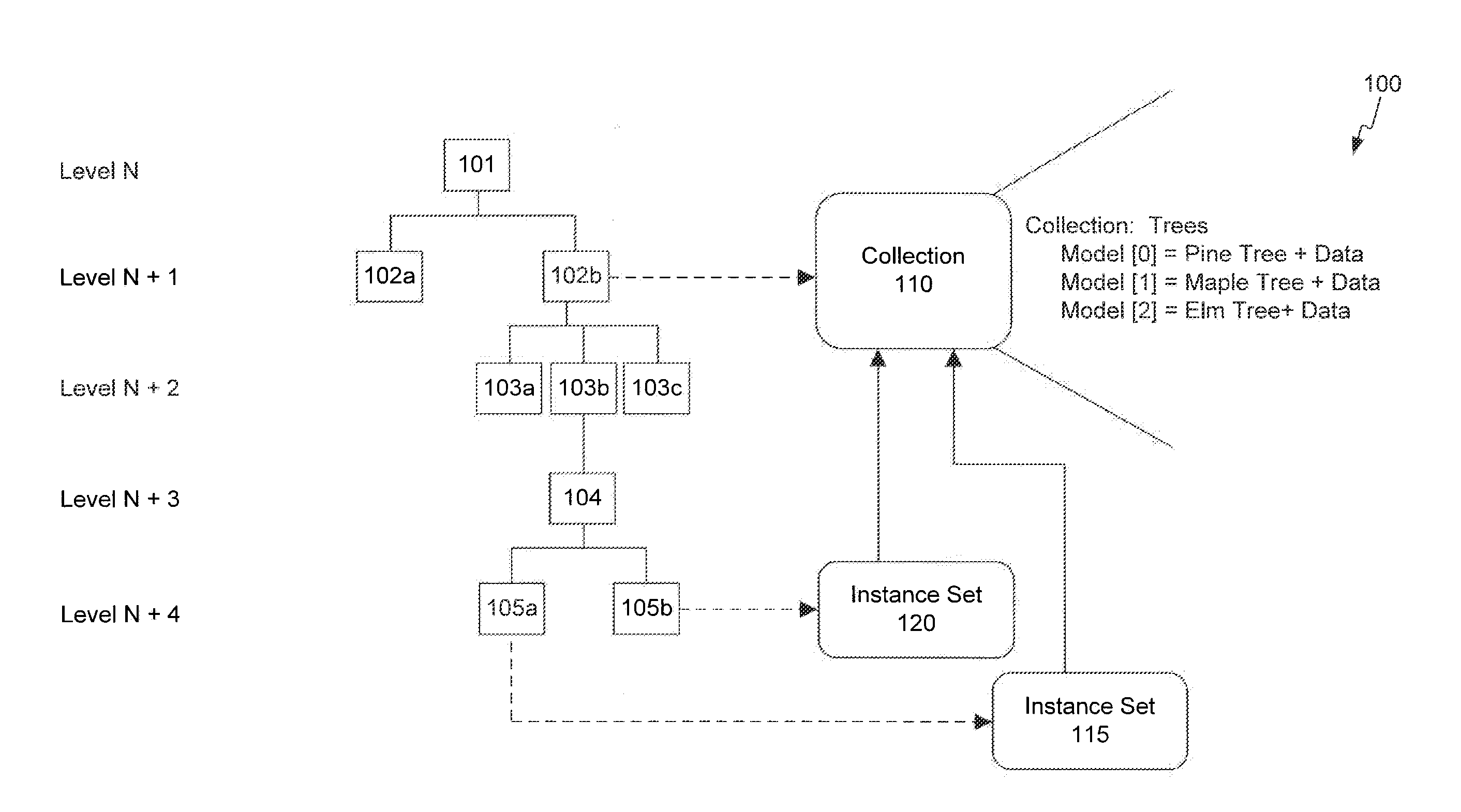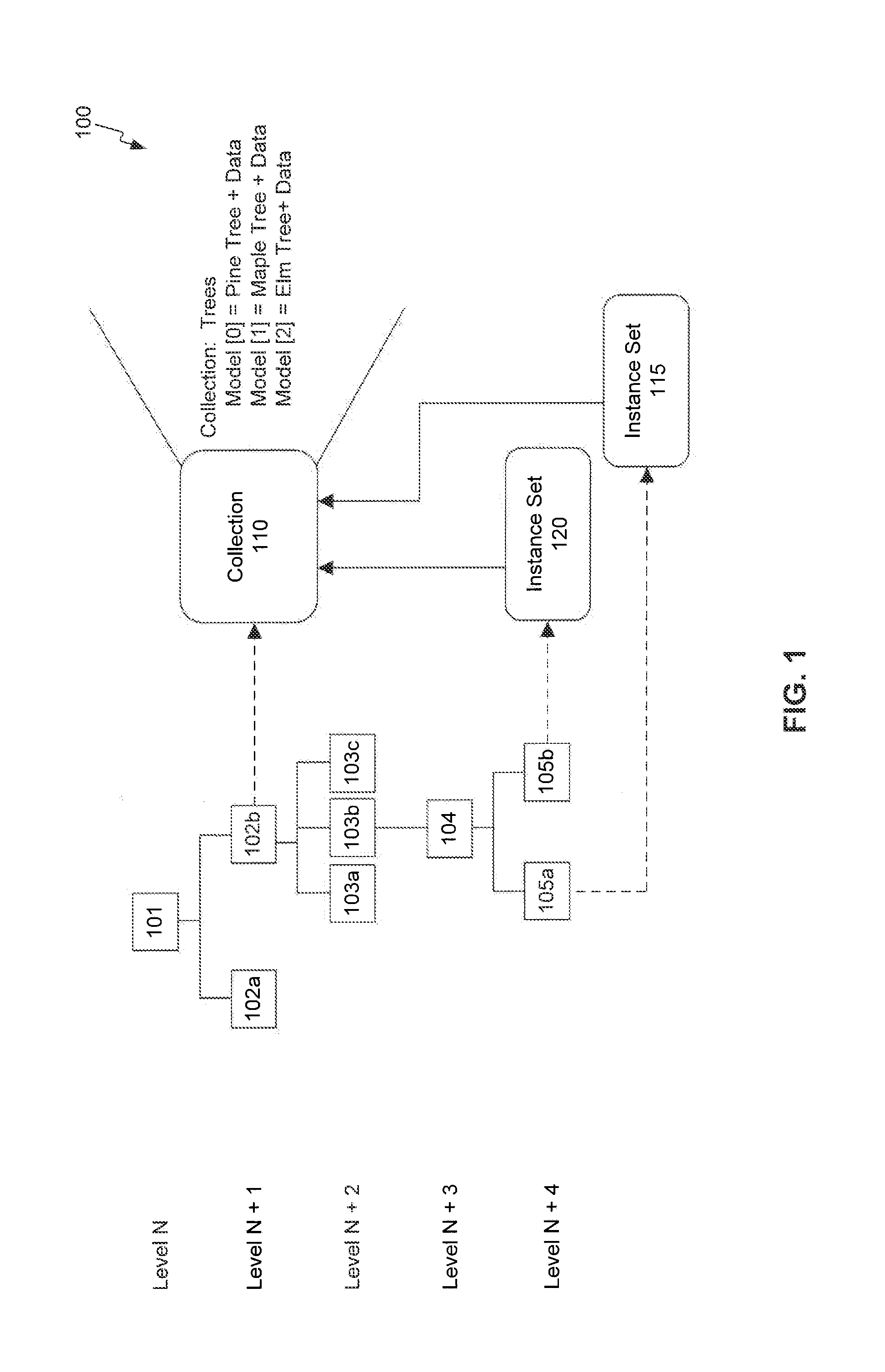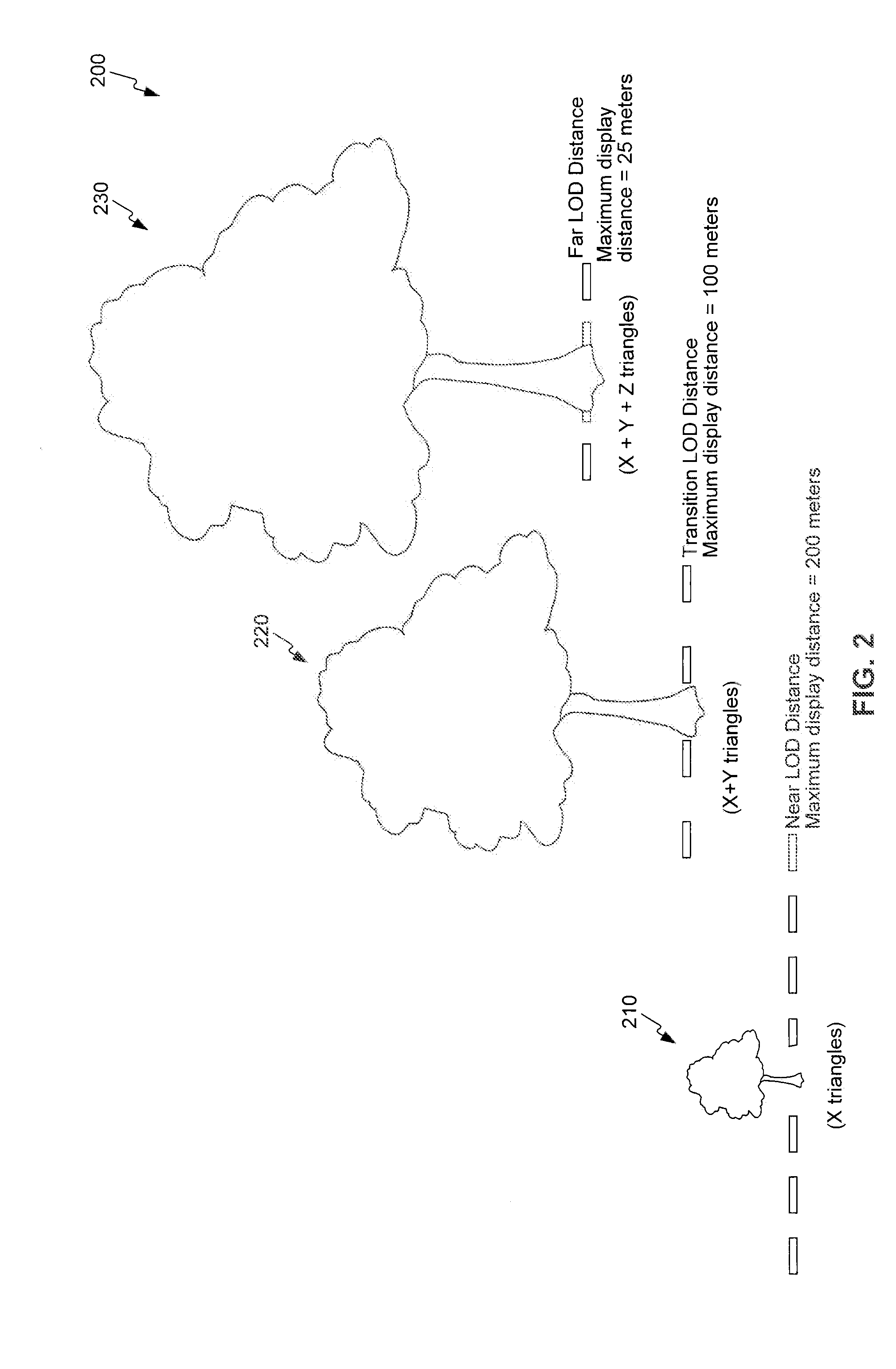View Dependent Level-of-Detail for Tree-Based Replicated Geometry
a tree-based, replicating geometry technology, applied in the field of geoinformation systems, can solve the problem that the client device may take a long time to display these trees, and achieve the effect of higher resolution
- Summary
- Abstract
- Description
- Claims
- Application Information
AI Technical Summary
Benefits of technology
Problems solved by technology
Method used
Image
Examples
Embodiment Construction
[0020]I. Overview
[0021]II. Node Tree[0022]A. Tree Representation[0023]B. Display Replicated Objects in a Geographical Information Environment
[0024]III. Levels of Detail[0025]A. Static LOD Distance[0026]B. Dynamic LOD Distance[0027]1. LOD Distance Separates Different LOD Instances[0028]2. Maximum Number of Instances at Higher Resolution LOD[0029]3. Density (ρ)
[0030]IV. Exemplary Client Architecture
[0031]V. Preprocess Node Tree[0032]1. Ingestion[0033]2. Distribution[0034]3. Publish[0035]4. Other Embodiments
[0036]VI. Geographic Data—Course and Fine Levels
[0037]VII. Exemplary Methods
[0038]VIII. Conclusion
I. Overview
[0039]This description generally relates to displaying geographic data in a three-dimensional environment. A client may display a view of a planet (e.g., Earth) by displaying nodes in a node tree. Some views of the planet may include a same object or similar objects that are placed in different locations in the view. These objects may share texture and geometry data.
[0040]In ...
PUM
 Login to view more
Login to view more Abstract
Description
Claims
Application Information
 Login to view more
Login to view more - R&D Engineer
- R&D Manager
- IP Professional
- Industry Leading Data Capabilities
- Powerful AI technology
- Patent DNA Extraction
Browse by: Latest US Patents, China's latest patents, Technical Efficacy Thesaurus, Application Domain, Technology Topic.
© 2024 PatSnap. All rights reserved.Legal|Privacy policy|Modern Slavery Act Transparency Statement|Sitemap



